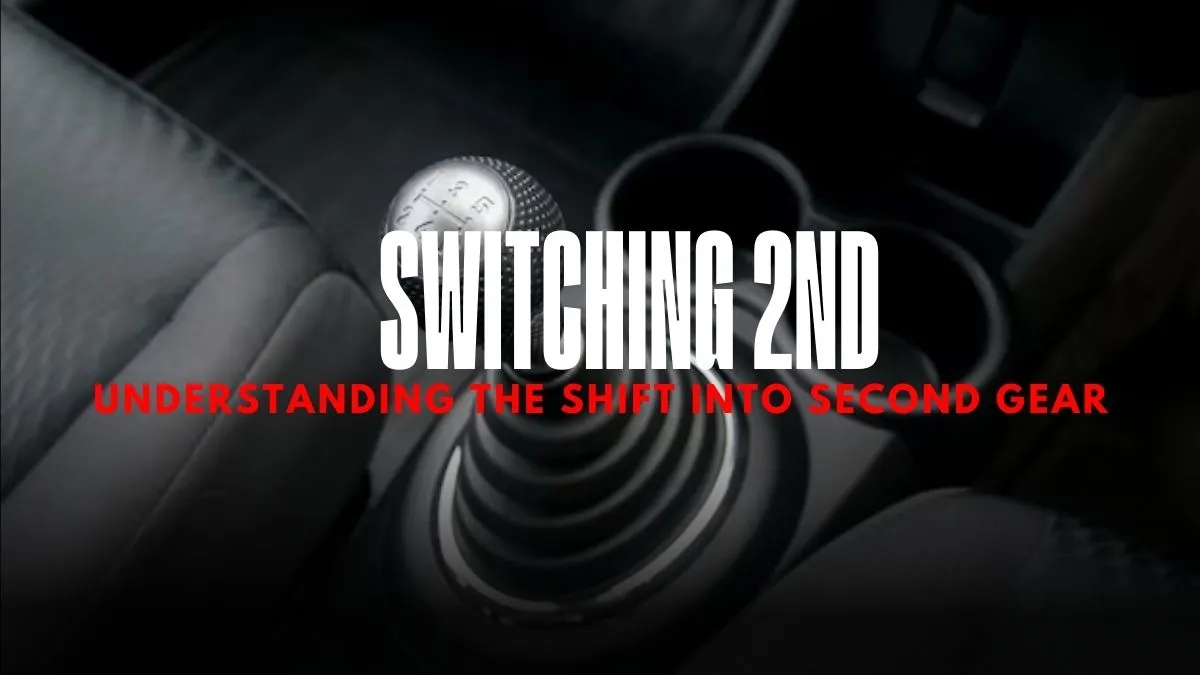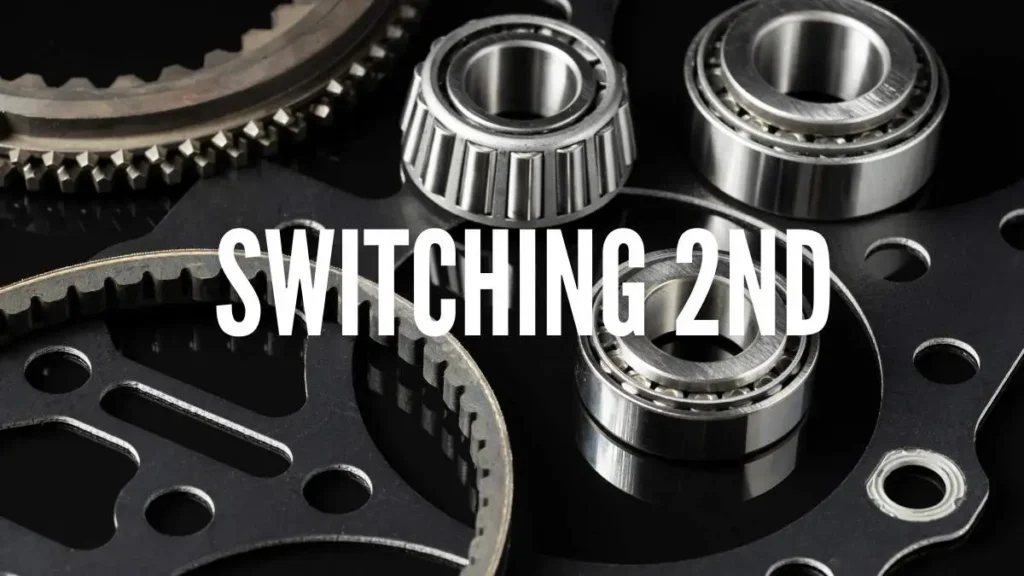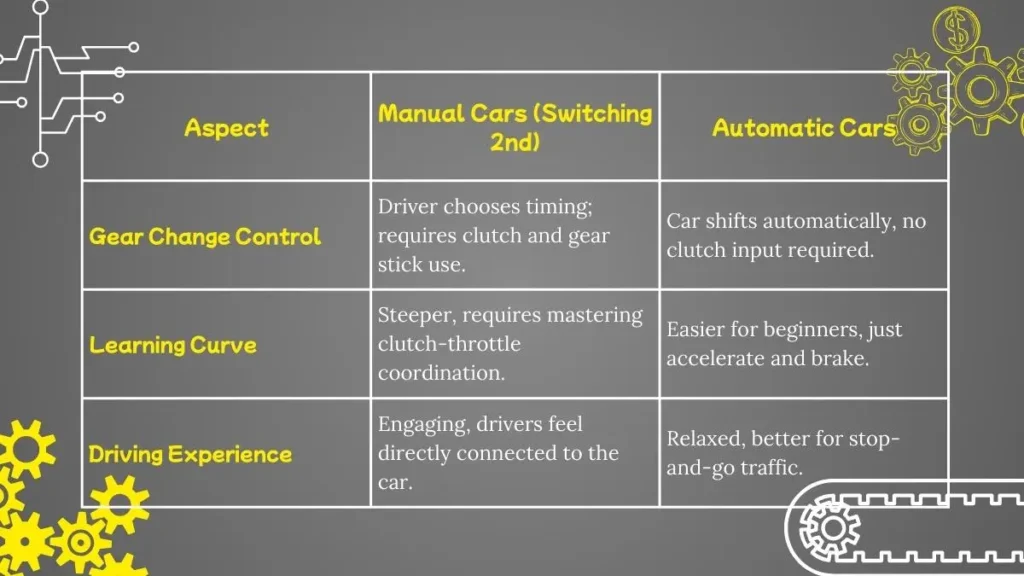GENERAL
Switching 2nd: Understanding the Shift into Second Gear

Quick Answer
Switching 2nd means shifting the car’s gear into second gear after starting in first and gaining enough speed. It allows smoother acceleration, prevents engine strain, and ensures efficient driving.
Introduction
When I first learned to drive a manual car, one of the earliest lessons my instructor emphasized was mastering the shift into second gear. At first, it felt like a mechanical step: clutch in, gear stick down, clutch out. But over time, I realized switching to second gear is more than routine; it directly affects the car’s performance, the smoothness of the ride, and even how confident I felt as a driver.
Many learners wonder why and when to switch into the second. The answer isn’t just “because your instructor says so”; it’s about understanding the balance between power, speed, and efficiency.
Table of Contents
What Does Switching 2nd Mean?
Switching 2nd refers to moving from first to second gear in a manual transmission car. Typically, this happens between 10–20 mph (16–32 km/h), though it depends on the car’s engine size and design.
- First gear: provides torque to move the car from rest.
- Second gear: keeps acceleration smooth while lowering engine strain.
In a small hatchback, you might switch earlier (around 12 mph). In a heavier SUV or pickup, the shift may feel natural closer to 20 mph.
Why Do Drivers Switch to Second Gear?
1. Smoother Acceleration
In first gear, revs climb quickly, making the car noisy and jumpy. Switching to the second balances torque and speed, giving passengers a more comfortable ride.
2. Preventing Engine Strain
Driving too long in first gear sends RPM soaring, which overworks the engine. Consistently doing this can wear piston rings and clutch components. Switching early preserves engine health.
3. Driving Efficiency
According to the U.S. Department of Energy, proper shifting can improve fuel economy by up to 15%. First gear is fuel-hungry; second gear burns fuel more efficiently while still offering acceleration.
4. Maintaining Vehicle Control
Second gear isn’t just for moving off smoothly; it’s also useful in situations like:
- Crawling over speed bumps.
- Rolling through busy intersections.
- Handling slippery surfaces where the first gear might spin the wheels.

When Should You Switch to Second Gear?
Timing depends on road conditions and car response, not just speedometer readings.
- Starting from rest: Shift once you’ve picked up momentum in first.
- Mild inclines: Hold first longer for torque, then shift into second.
- Slow traffic: Use the second to avoid jerky stop-starts.
- Roundabouts & junctions: Switch before entering for smoother control.
The UK’s DVSA advises drivers to listen to the engine sound and feel, rather than staring at the speedometer. A rev range of 2,500–3,000 RPM (for small cars) is a good guide.
Signs You Need to Switch to Second Gear
Your car gives subtle hints:
- Engine noise: A rising, whining sound.
- Lack of acceleration: Pressing the pedal, but little speed gain.
- Tachometer climbing too high: Beyond 2,500–3,000 RPM.
- “Feel” of the car: The motion becomes less smooth, signaling it’s time.
With practice, switching becomes instinctive, like the car is “telling you” to shift.
How to Switch into Second Gear Properly
- Accelerate gently in first until reaching a comfortable speed.
- Release the accelerator and press the clutch fully.
- Move the gear stick from first to second.
- Gradually release the clutch while pressing the accelerator.
Pro Tip (Advanced Drivers): On older cars or performance vehicles, some drivers use rev-matching or double-clutching to make the shift smoother and reduce clutch wear.
Common Mistakes When Switching 2nd
- Shifting too early: Can cause stalling or sluggish acceleration.
- Shifting too late: Wastes fuel and stresses the engine.
- Dumping the clutch: Causes jerks, making passengers uncomfortable.
- Forgetting throttle balance: Releasing the clutch without pressing the accelerator leads to stalls.
Correcting these improves not just driving smoothness but also mechanical longevity.
Switching 2nd in Different Driving Situations
1. City Driving
Stop-and-go traffic demands quick shifting into second. Holding first too long causes unnecessary noise and fuel waste.
2. Uphill Driving
On slopes, timing is critical. Shift too early, and you risk rollback. Some drivers hold first gear longer or use handbrake-assisted starts.
3. Downhill Driving
Second gear provides engine braking, saving brake pads and giving steadier control.
4. Slippery Roads (Rain, Snow, Ice)
In some conditions, starting directly in second reduces wheel spin. For instance, many European winter driving schools teach using second gear when moving off on snow.
Switching 2nd vs. Automatic Cars

Second Gear in Driving Tests
Examiners check not just if you can shift, but how smoothly you transition. Lingering in first, stalling, or jerky shifts often cost points. Mastering second gear is seen as a sign of overall clutch control and road awareness.
My Personal Experience
When I first drove in heavy Lahore traffic, I either stayed in first too long or panicked and shifted too early. Over time, I learned to rely less on numbers and more on sound and feel.
Interestingly, driving a small hatchback vs. a diesel SUV changed my timing diesels need earlier shifts due to lower rev limits. That taught me there’s no universal “perfect speed”; it’s about listening to your car.
Conclusion
Switching to second gear is far more than a beginner’s lesson. It’s about time efficiency, and awareness. Done right, it ensures:
- Smoother rides.
- Better fuel economy.
- Longer engine life.
- More confident driving.
For learners, my advice is: don’t just memorize numbers. Pay attention to engine sound, car feel, and road context. Once you build intuition, the shift into the second becomes second nature.
References
- Driver and Vehicle Standards Agency (DVSA). Learning to Drive: The Official Guide. UK Government.
- U.S. Department of Energy. Driving More Efficiently.
- RAC Foundation. Tips for Manual Transmission Drivers.
-

 GENERAL5 months ago
GENERAL5 months agoChristofle – For Those Who Dream of Family Heirloom Silver
-

 SPORTS7 months ago
SPORTS7 months agoDiscover the World of Football with Streameast: Watch Your Favorite Leagues and Tournaments
-

 GENERAL4 months ago
GENERAL4 months agoUncovering the World of кинокрадко: The Dark Side of Film Piracy
-

 GENERAL2 months ago
GENERAL2 months agoATFBooru: Anime, Gaming, and Subculture Imageboard























